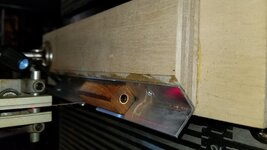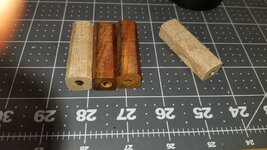stevet876
Member
I found a cool easy to make blank jig on you tube. It is used for cutting the corners off the blank to save wear and tear and time when turning down the blank. it works great and cost less than $4 for the aluminum angle. here is a link to the video I used to build the jig.
https://www.youtube.com/watch?v=HV7V5ewo2GM
https://www.youtube.com/watch?v=HV7V5ewo2GM
Attachments
Last edited:


